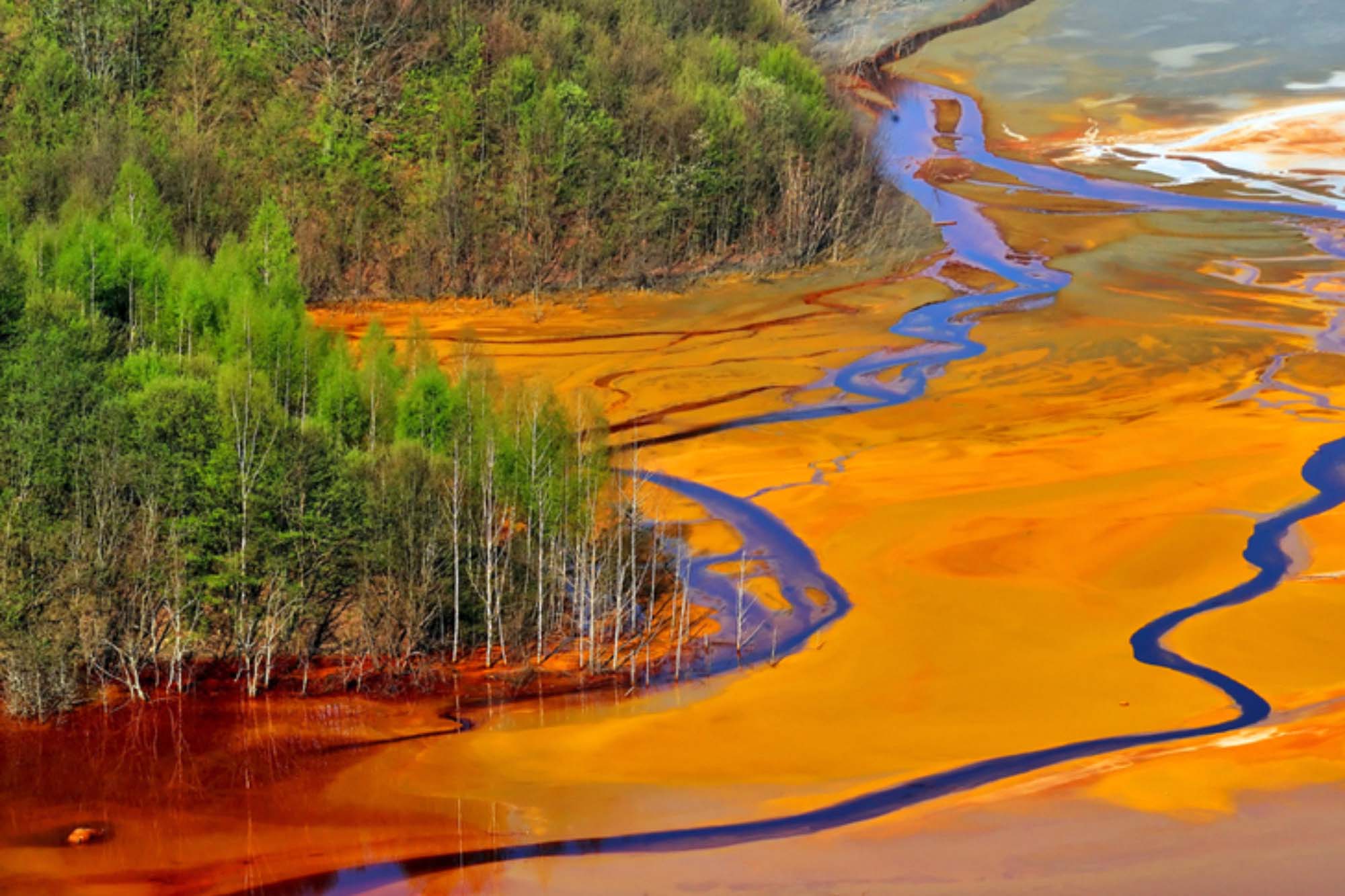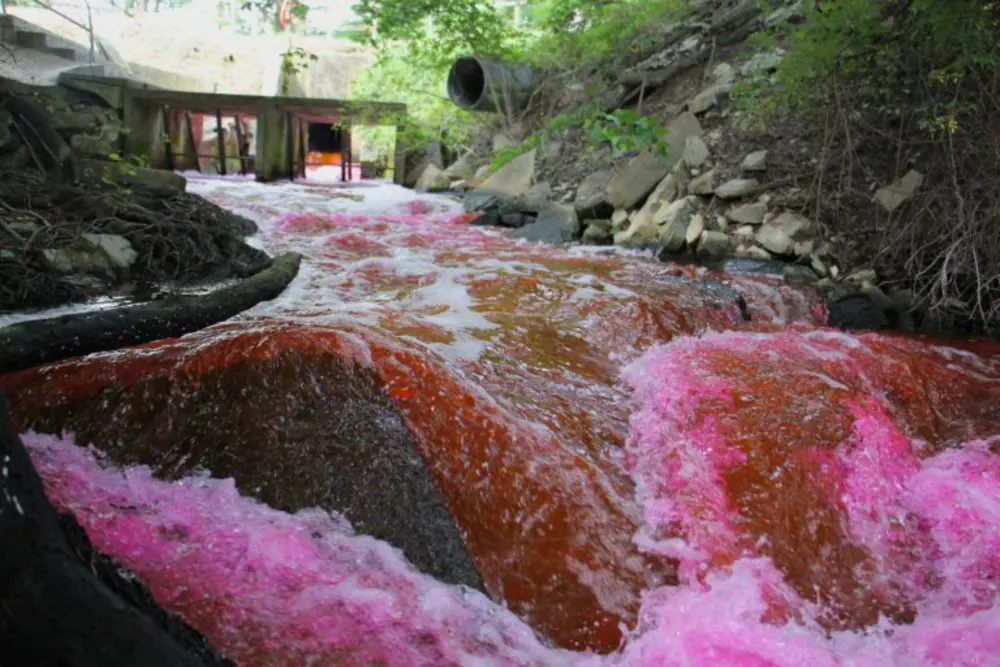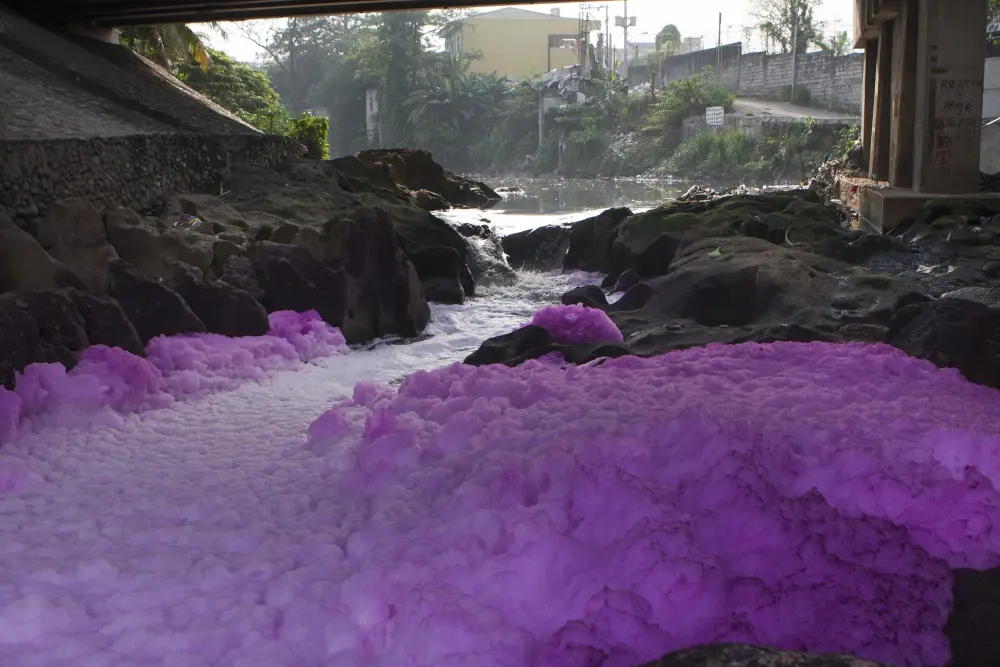Regardless of the hue, getting colour into our clothing requires immense amounts of fresh water. In fact, the fashion industry uses about 21 trillion gallons of water annually.
At factories around the world, dye-stained water is routinely emptied into natural water systems such as rivers and lakes, which can result in the death of entire marine ecosystems.
In China, for example, several rivers have been seen turning completely pink, purple, or red due to run-off water from factories.
The worst culprits are synthetic dyes, such as azo dyes, which are popular for being cheap and capable of achieving a stronger colour grade. But these dyes use chemicals that contain toxic aromatic amines, carcinogenic compounds which can lead to cancer or respiratory issues when handling them over time.
In factories with poor safety regulations, many employees work without adequate protective items such as gloves, sandals, or masks. This results in chemicals used to treat clothing being ingested through the skin and while breathing.
It’s worth noting that in Europe, the use of azo dyes has already been banned, but they can be seen used in places where a large majority of fast fashion companies operate, such as China and India.

Azo dyes are also used in Bangladesh, where the textile industry makes up 20 percent of the nation’s GDP and employs over 4.5 million people. Here, many citizens must make the difficult choice to work with toxic chemicals over being jobless.
Since the goal of fast fashion brands is to make as many clothes as they can (and as cheaply as possible), utilising cotton for bright clothing is typically not the first choice because it requires a lot more dye and additional wash cycles.
As a result, polyester has become the most popular textile in the industry. In fact 52 percent of all clothing produced in 2020 was made of polyester.
Though it is favoured for its ability to retain colour more easily, polyester is problematic in and of itself as it is essentially plastic, derived from fossil fuels.

So what can we do to ensure we aren’t fuelling a demand for products that harm the planet and the workers who create them?
The good news is it shouldn’t be too hard – and we don’t have to completely swear off dopamine dressing this coming winter.
Thanks to a growing demand from conscious consumers, some brands have begun looking for ways to make their clothing more ethical. Brands like PANGAIA and MUD Jeans have started using innovative chemical-free dyes that don’t harm the environment during processing stages.
Numerous other brands are making the effort to quit chemical dyeing processes too. You can view a full list of brands using environmentally friendly, organic, plant-based, and clay dyes here.





















